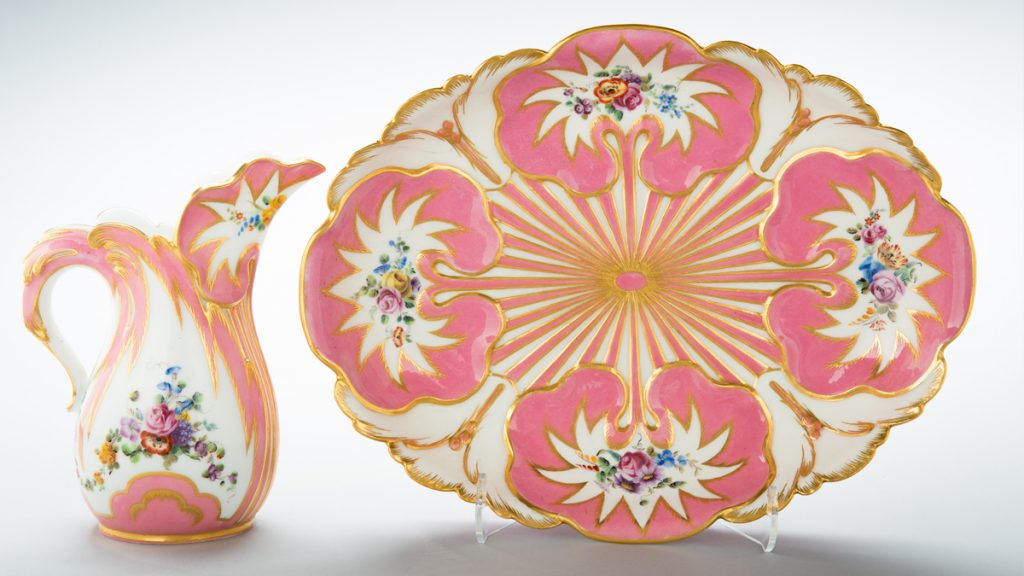Just as elsewhere in Europe, Asian porcelain was collected with passion in France in the late seventeenth and early eighteenth centuries. It became part of the goût chinois (Chinese taste), which remained popular until the late eighteenth century. Porcelain was used by the nobility and the wealthy bourgeoisie for decorating, dining, the refined drinking of tea, chocolate, and coffee, and for personal uses in the boudoir.
Soft-paste porcelain was first produced in France in the late seventeenth century, developing from experiments made by faïence makers. The first commercially successful porcelain manufactory was established in Saint-Cloud, outside Paris. Other small manufactories, such as Chantilly and Villeroy-Mennecy enjoyed the patronage of the nobility. But it was the manufactory of Vincennes-Sèvres, which flourished with royal patronage and ownership, that became the arbiter of porcelain style throughout Europe from the mid-1750s until the Revolution. French manufacturers made soft-paste porcelain until kaolin was discovered at Limoges in the late 1760s, when hard-paste porcelain was produced by Sèvres, and later in Paris.
George and Helen Gardiner’s collection of French porcelain has been enhanced with significant gifts from private collectors including Pierre Karch and Mariel O’Neill-Karch. It is the most comprehensive public collection in Canada.
1. Ewer and Basin (detail), France, Sèvres, c.1758, Gift of George and Helen Gardiner, G84.1.2
2. Ewer and Basin (detail), France, Sèvres, c.1758, Gift of George and Helen Gardiner, G84.1.2
3. Wall Vase (detail), Austria, Du Paquier, c.1730, Gift of George and Helen Gardiner, G83.1.1220
4. Sunflower Dish (detail), England, London, c.1755, Gift of George and Helen Gardiner, G83.1.1108.1-2
5. The Monkey Orchestra (detail), Germany, Dresden, Meissen, c.1753-1775, Gift of George and Helen Gardiner, G83.1.675.1-.18
6. Sugar Box with Armorial (detail), Italy, Doccia, c.1745-1750, Gift of George and Helen Gardiner, G83.1.1105
7. Gardener with Watering Can (detail), Switzerland, Zurich, c.1770, The Hans Syz Collection, G96.5.421
8. Chocolate Pot (detail), Denmark, Copenhagen, c.1775, Gift of George and Helen Gardiner, G83.1.1104
9. Scowling Harlequin (detail), Germany, Meissen, c.1738-40, Gift of George and Helen Gardiner, G83.1.907
10. Teapot (detail), Germany, Meissen, c.1730, decorated at Lauche, Gift of George and Helen Gardiner, G83.1.764
11. Exotic Bird (detail), England, London, St. Jame's Factory, c.1751-1754, Gift of George and Helen Gardiner, G83.1.1005

